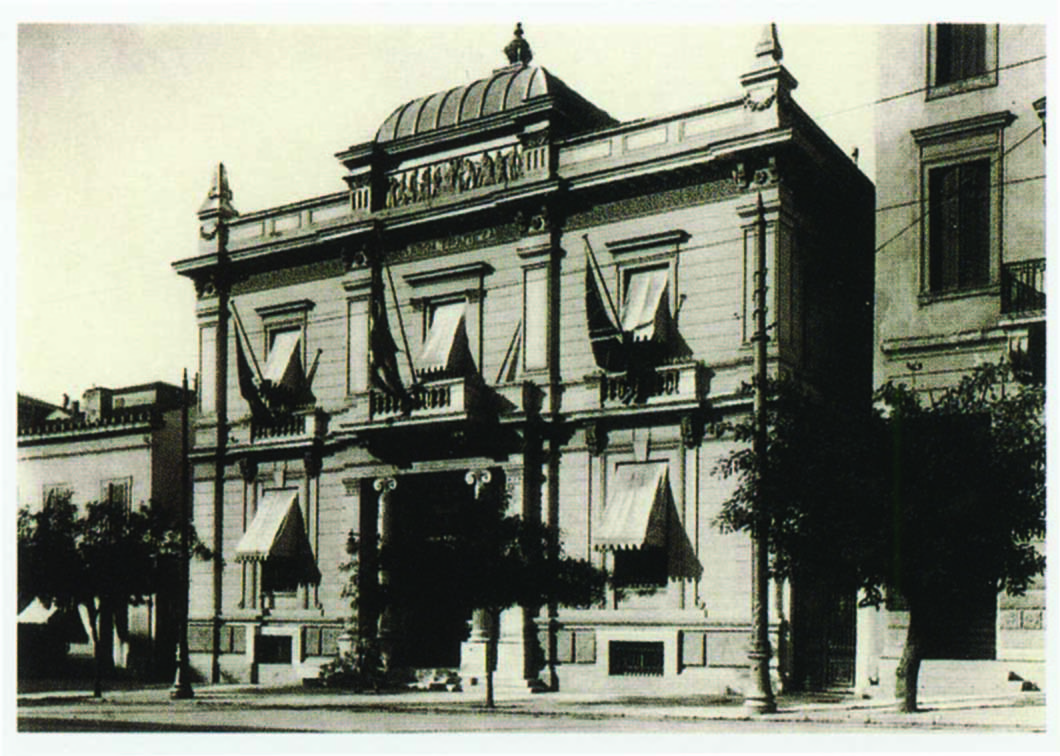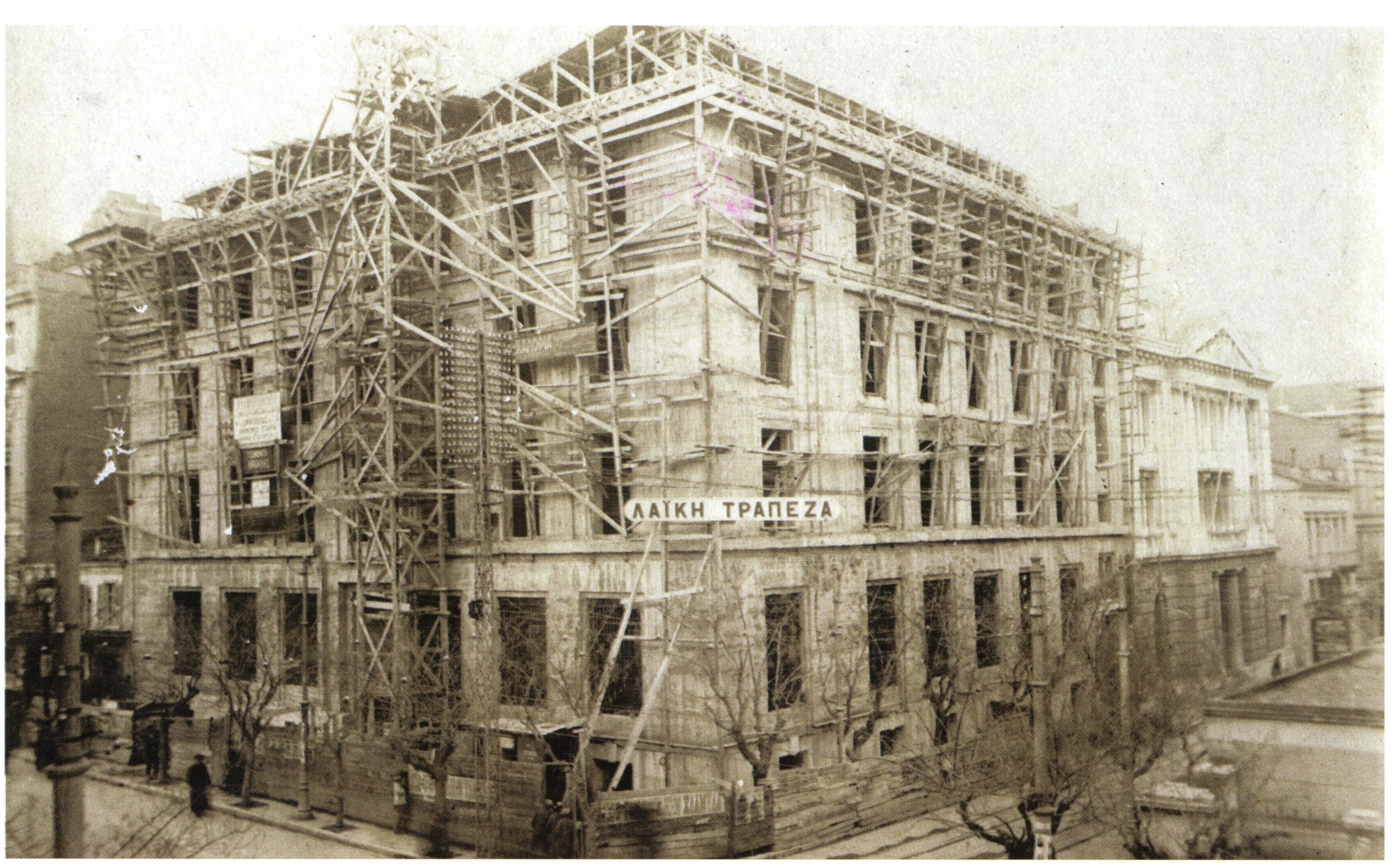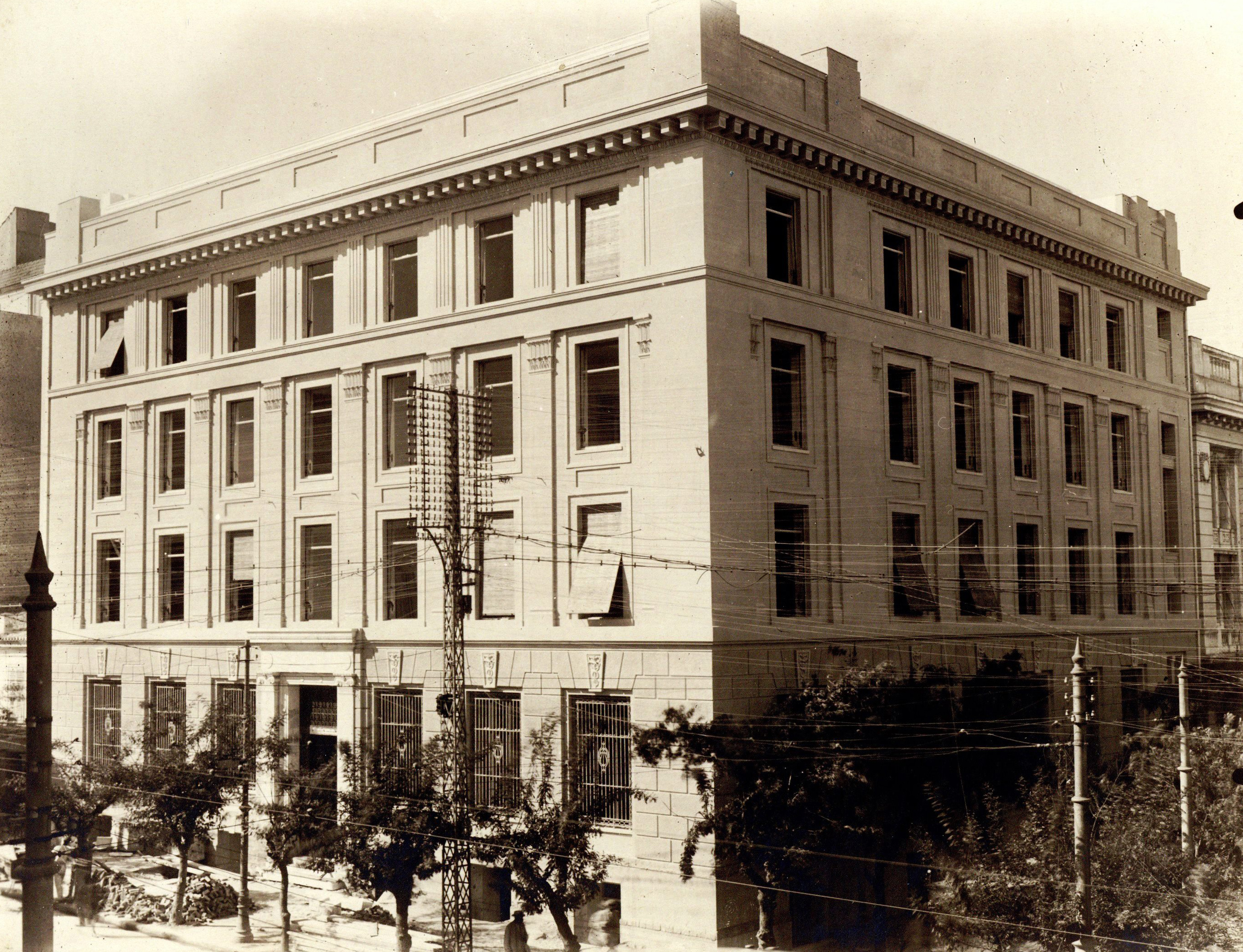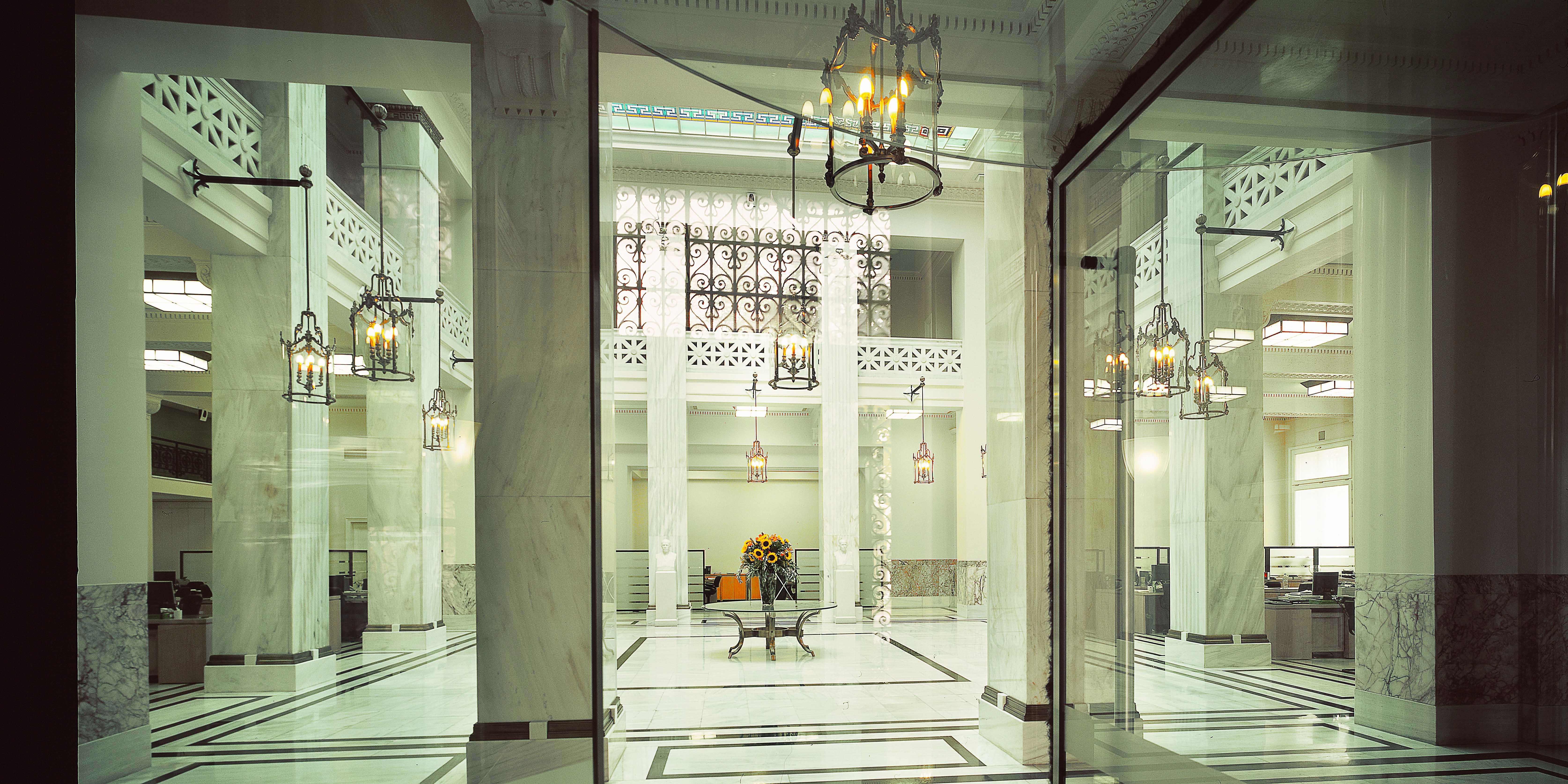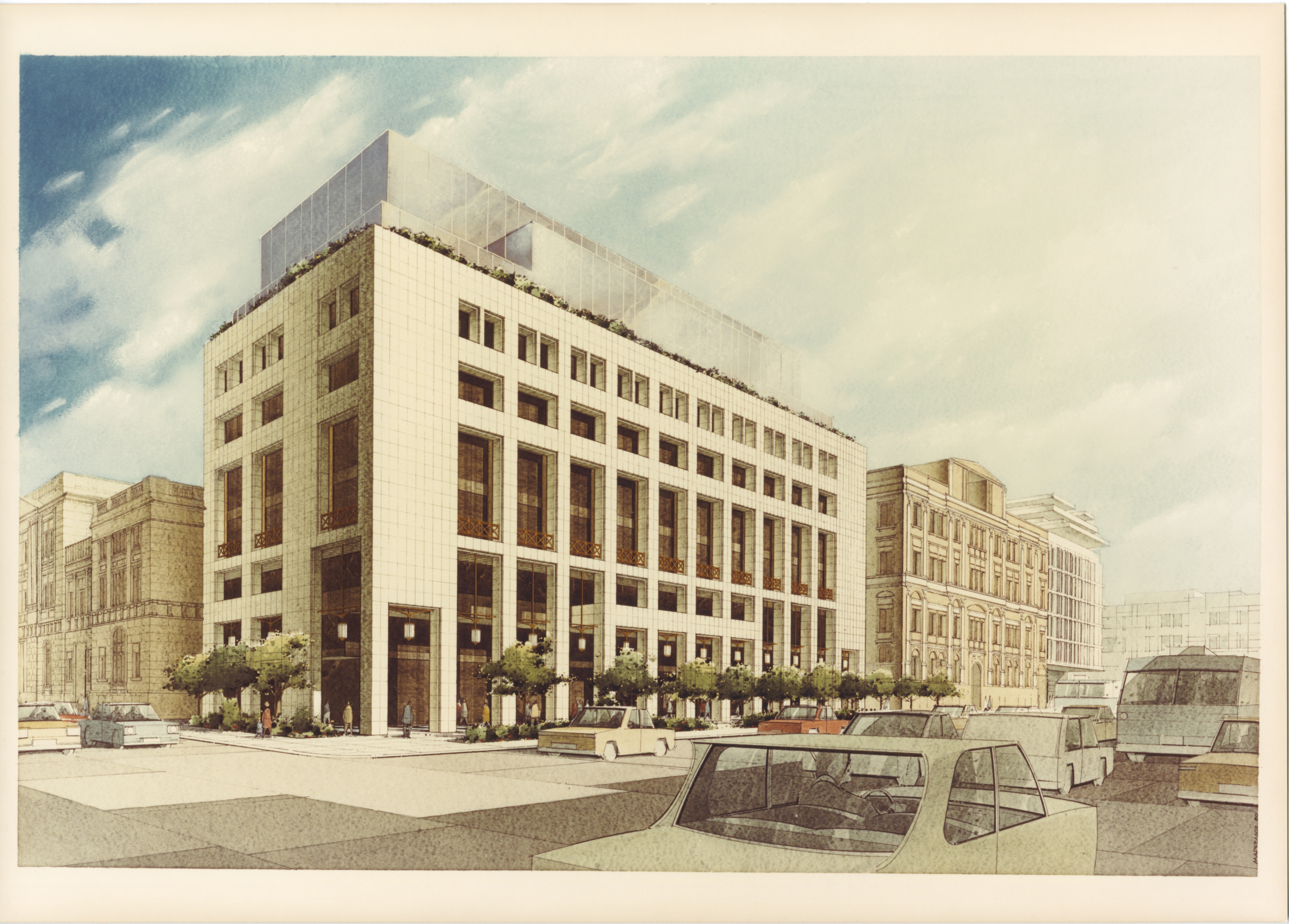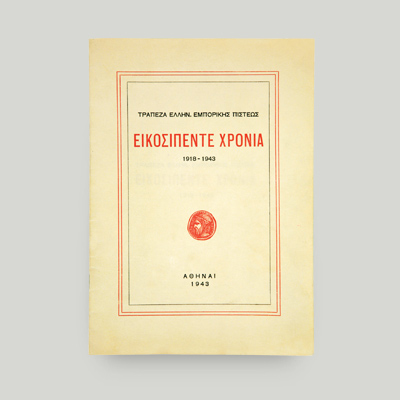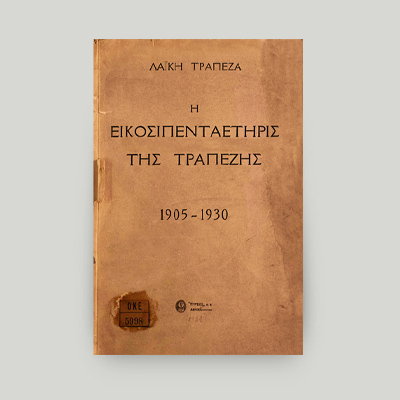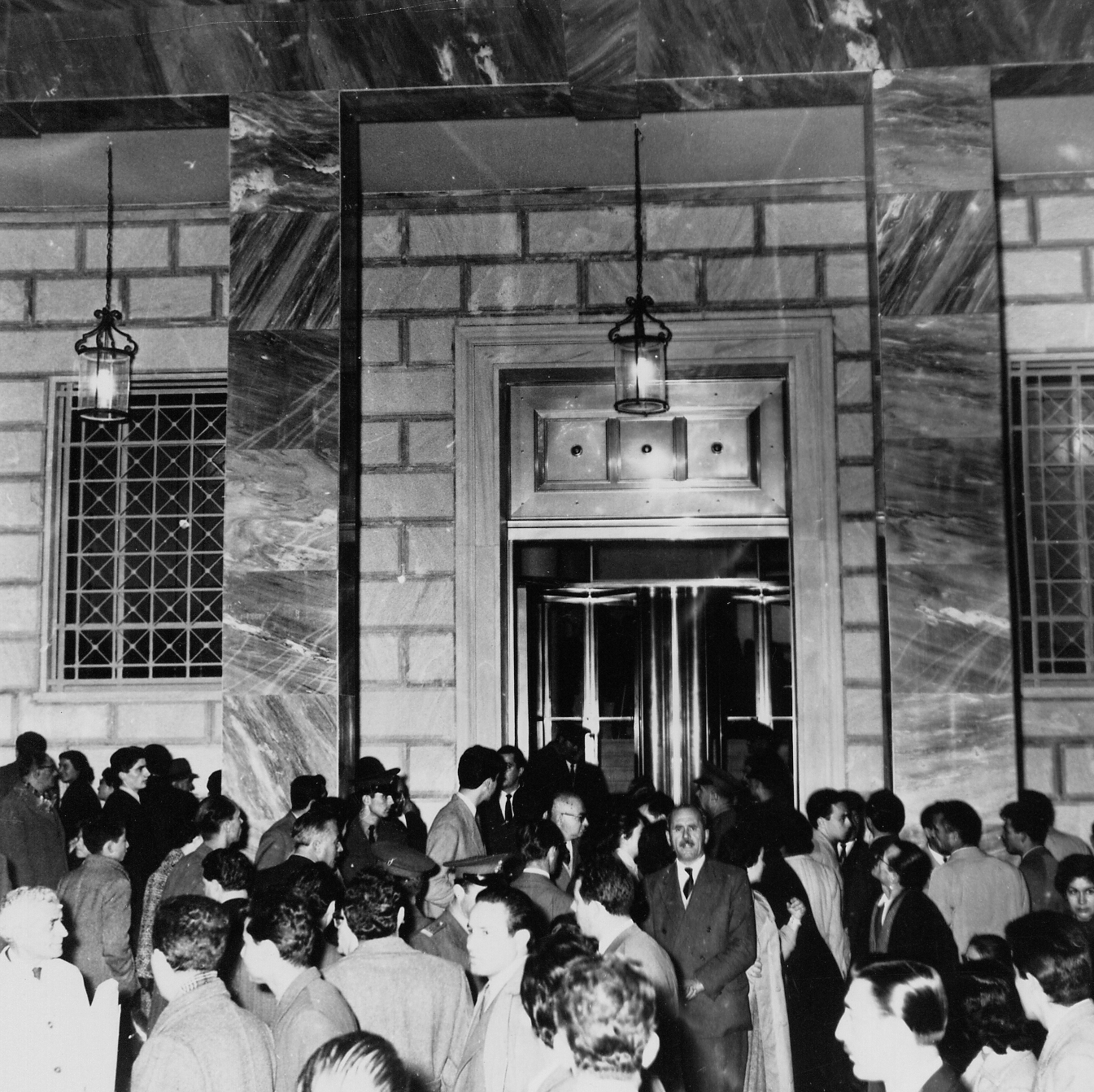Popular Bank headquarters
After initially operating out of a privately-owned building on Panepistimiou Street (1909-1927), Popular Bank went on to build its new headquarters at the corner of Panepistimiou and Pesmazoglou Streets in downtown Athens. The structure was one of the most imposing urban buildings constructed during the Interwar period and still stands as a charming landmark in the capital’s centre.
Photos of the Popular Bank headquarters from the years 1909-2006:
- The privately-owned headquarters out of which the bank operated from 1909 to 1927 (photo 1).
- Construction of the new 4-storey headquarters of Popular Bank at the corner of 45 Panepistimiou Street and 14 Pesmazoglou Street (photo 2).
- The finished 4-storey headquarters (photo 3). The structure was one of the most imposing urban buildings constructed during the Interwar period and still stands as a charming landmark in the capital’s centre.
- The main hall following an extensive refurbishment by Alpha Bank in 2006 (photo 4). Refurbishment works restored the building to its original architecture before it was merged with the Ionian Bank headquarters in 1958.
The first headquarters on Panepistimiou Street
Early on, Popular Bank attached immense importance to the character of the buildings out of which it would operate.
Even though it started in rather modest offices at the Arsakeion School Gallery, it was not long before it moved to its own imposing building.
By 1909 the building on Panepistimiou Street opposite Arsakeion School was ready to accommodate Popular Bank as its new headquarters. It was designed by established architect Panos Karathanasopoulos.
An elegant glass ceiling covered the centre of the main hall. Artist Petros Roumpos executed the wall painting on the façade that showed how Popular Bank would remain true to its name and benefit the working class.
The need for new headquarters
The mid-1920s saw a rapid growth in Popular Bank’s operations. This meant that the need to construct new, larger headquarters was becoming all the more pressing.
Anastasios Metaxas, an established architect at the time, chose the property at the corner of 45 Panepistimiou Street and 14 Pesmazoglou Street as the construction site. He went on to design the building, and construction was carried out by construction company Ergoliptiki SA.
The main purpose of the new building was to cover the immediate needs of an office space, while at the same time providing all modern amenities.
Yet, the process was not without its problems. Creating the stained-glass ceiling of the 2-storey main hall at the ground floor proved quite challenging.
The 4-storey building was completed in 1927. It was one of the most imposing urban buildings constructed during the Interwar period and still stands as a charming landmark in the capital’s centre.
Architect Anastasios Metaxas’ loyalty to classical architecture is reflected in the building’s architectural elements, including:
- The 3-tier structure.
- The layout of the openings.
- The texturing of the surfaces between openings.
Changes after the merger with Ionian Bank
The merger of Popular Bank with Ionian Bank in 1958 made it necessary to also merge the 2 banks’ headquarters, which stood adjacent to each other. Until then, a small courtyard had separated the two buildings.
Architect Konstantinos Kapsampelis was commissioned to design the unified structure. Some of the challenges he faced was the need for a single common façade and coming up with an interior layout that would maximise functionality between the 2 buildings. To resolve these issues, he had to make radical structural changes.
More recent developments
In 1983 the Ionian Bank headquarters were classified as a listed building.
Since 2000, when Alpha Credit Bank absorbed Ionian Bank to create Alpha Bank as we know it, the building has belonged to the latter.
Upon acquiring the property, Alpha Bank started to plan the refurbishment and reconstruction process right away. A first stage included temporary aesthetic improvements carried out by the bank’s technical department. These happened in anticipation of the Athens 2004 Olympics, as Alpha Bank was a Grand National Sponsor for the major event.
Refurbishment and reconstruction works were completed in 2006. The purpose was to restore all the elements modified during the 1958 merger to their original form.
A collection of rare material
The items are part of Popular Bank’s collection of rare photos. They are unique proof of the bank’s building activity from 1909 to 1950. The buildings pictured are important examples of neoclassical architecture.
The buildings in our publications
More information about the Popular Bank headquarters is available in City Block 19: The Presence of Alpha Bank in the Centre of Athens by Dimitris Filippidis, 2009, Athens. The book details the history of Alpha Bank’s buildings, which occupy a great part of city block no. 19 in the centre of Athens.
Buy the publication City Block 19: The Presence of Alpha Bank in the Centre of Athens on the Alpha Bank e-shop.
The Alpha Bank Historical Archives are not open to the public.
Research visits can be organised upon request.
Contact us to request a visit.
